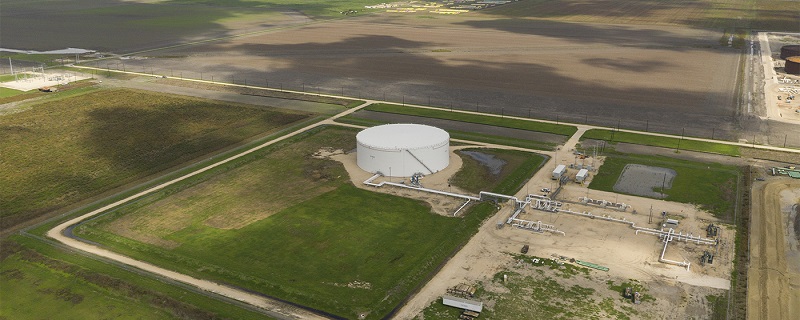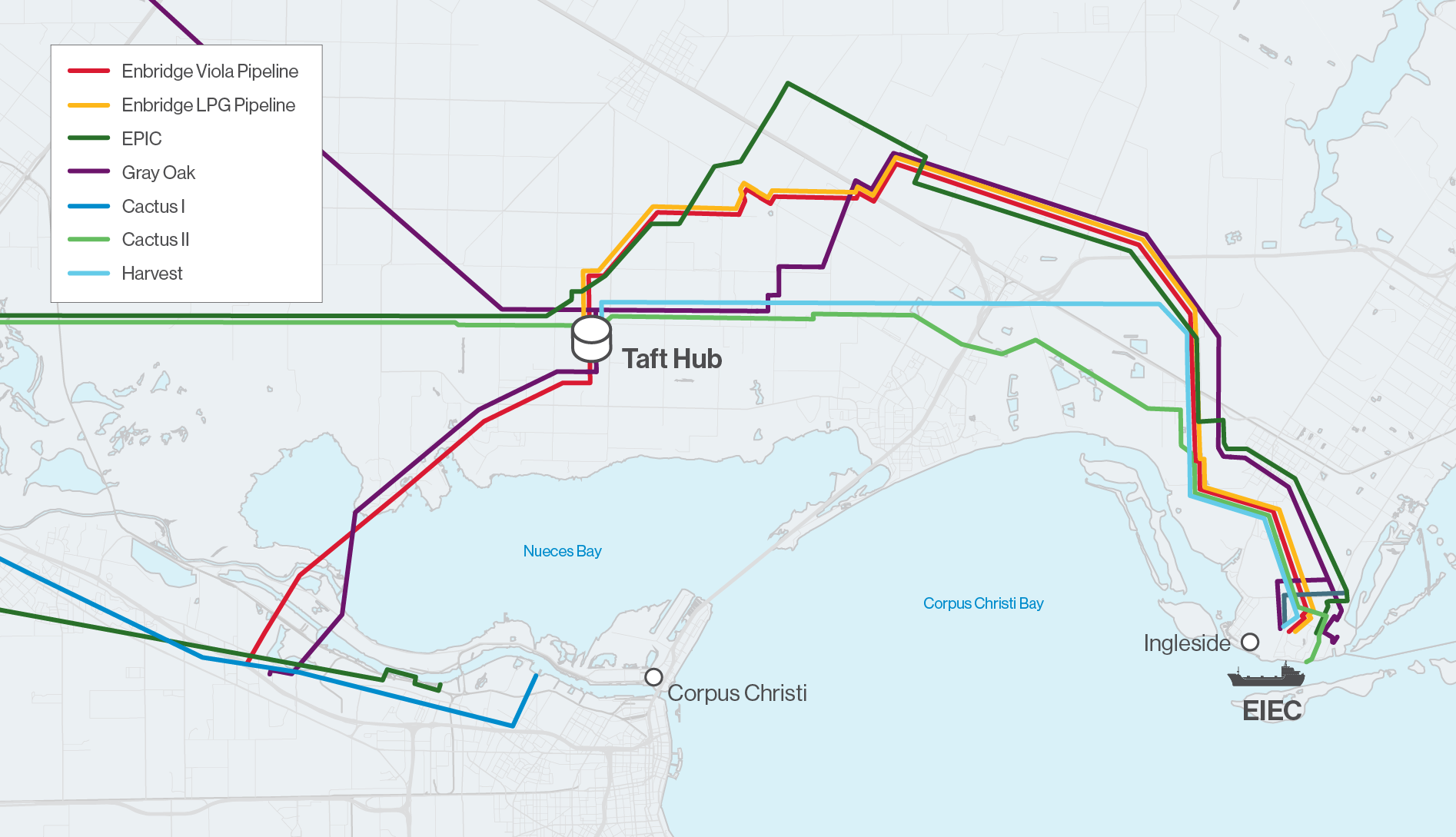Export terminals
Enbridge Ingleside Energy Center (EIEC)
EIEC is the largest crude oil export terminal by volume in the North America, loading an average of 25% of all U.S. Gulf Coast crude exports every year.
Its strategic location at Ingleside, Texas positions the facility right at the gateway of international shipping lanes. EIEC is a strategic intersection of pipeline connectivity and export optionality, making it a cost-advantaged location for transportation of crude oil and other products.
EIEC has been a key link in the expansion of WTI into international markets. In 2024, WTI was included into the Brent trading market, with EIEC barrels contributing to the price in the world market.
With direct connectivity to Cactus I, Cactus II, Gray Oak, EPIC, and Harvest, EIEC can receive multiple crudes into the facility from the Permian and Eagle Ford basins.
 Layout of the Enbridge Ingleside Energy Center (EIEC). Click on the image to see a larger version.
Layout of the Enbridge Ingleside Energy Center (EIEC). Click on the image to see a larger version.
EIEC crude storage infrastructure
- Current storage capacity totals 17.6 million barrels of crude oil
- Major storage capacity includes 6 x 350,000 and 30 x 495,000-barrel tanks
- 5 tanks under construction with 2.5-million-barrel incremental capacity
- Drain-dry tanks with internal floating roofs minimize inventory heels
- State-of-the-art manifold capable of receiving multiple pipelines at mainline rates into all tanks
- Segregated capacity to control quality of various crude grades
- Blending and tank-to-tank transfers
- State-of-the-art firefighting system
EIEC marine infrastructure
- 3 deep-water vessel berths capable of loading very large crude carriers (VLCCs) up to 1.5 MMbbl, and fully loading Suezmax vessels
- Combined loading rate of 160K barrels per hour
- Average vessel turnaround of 40 hours (all-fast to sail)
- Proximity to open water enhances turnaround capacity, resulting in a 24-hour average advantage over most terminals in Corpus Christi
- Only facility in the Port of Corpus Christi allowed to load vessels to 52'
- Barge dock for the receipt and delivery of marine fuels
EIEC additional infrastructure
- 3 x 80,000 marine fuels storage
- 2 x 40,000 LPG spheres with refrigeration equipment
- 1 x 12" LPG pipeline available for reactivation
- 500 acres of unimproved land zoned for industrial development
EIEC connectivity
| System Name | Capacity (bpd) | Diameter |
|---|---|---|
| Cactus I (via EIOP1) | 300,000 | 20” |
| Cactus II2 | 670,000 | 26” |
| Gray Oak3 | 1,000,000 | 30” |
| Arrowhead Eagle Ford Pipeline | 600,000 | 24” |
| EPIC | 400,000 | 20” |
1Enbridge ownership: 100%; 2Enbridge ownership: 30%; 3Enbridge ownership: 68.5%.

Taft Terminal
Enbridge’s Taft Terminal is located at a key pipeline junction within close proximity to EIEC.
The junction enables volumes to travel from the Permian to Corpus Christi’s inner harbor as well as multiple destinations at Ingleside, including EIEC. Taft Terminal’s location provides an optimum storage location for volumes destined to the Corpus Christi market.
Taft facility infrastructure
- 50-acre footprint
- 1 x 350,000-barrel tank
- Permitted for an additional 7 x 350,000 barrel tanks
- Manifold header to support future interconnection to additional pipelines

Pipelines serving the Corpus Christi area. Click on the image to see a larger version.
Taft Facility connectivity
| System Name | Capacity (bpd) | Diameter |
|---|---|---|
| Cactus I (via EIOP1) | 300,000 | 20” |
| Arrowhead Eagle Ford Pipeline | 600,000 | 24” |
| EPIC | 400,000 | 20” |
1Enbridge ownership: 100%.








